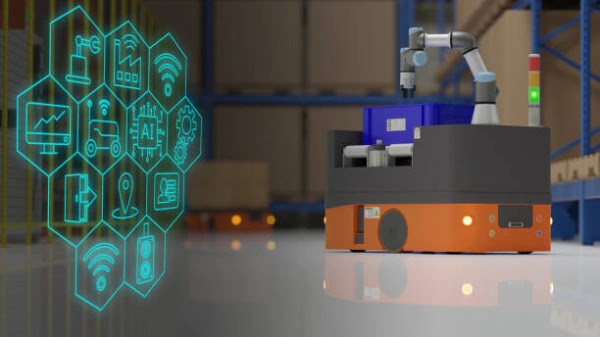Featured
- Get link
- X
- Other Apps
Enhancing Security Through Strategic Analysis

Threat Modeling: Enhancing Security Through Strategic Analysis
In the rapidly evolving landscape of cybersecurity,
organizations face a myriad of threats ranging from sophisticated cyber-attacks
to physical breaches. Threat modeling, a structured approach to identifying and
mitigating security risks, has emerged as a crucial technique in safeguarding
digital assets and sensitive information. This proactive process involves
systematically evaluating potential threats, vulnerabilities, and potential
impacts to design robust security measures. In this item, we will explore the
concept of threat modeling, its key components, and its significance in
fortifying digital defenses.
1. Understanding Threat Modeling:
a. Definition:
Threat modeling is a systematic and methodical approach to
understanding potential threats, vulnerabilities, and risks within a system or
application. It involves identifying, prioritizing, and mitigating potential
security threats before they can be exploited. By simulating potential attacks,
organizations can preemptively bolster their security measures.
b. Key Objectives:
The primary objectives of threat modeling include
identifying potential attack vectors, understanding the attacker’s perspective,
evaluating security controls, and prioritizing mitigation efforts. Threat modeling
aims to uncover vulnerabilities and weaknesses that could be exploited by
adversaries and helps organizations make informed decisions regarding security
investments.
2. Key Components of Threat Modeling:
a. Data Flow Diagram (DFD):
DFDs are visual representations of how data flows within a system. They help identify data sources, data stores, processes, and data flows, enabling a comprehensive understanding of the system's architecture. DFDs serve as the foundation for threat modeling exercises.
b. Threat Enumeration:
Identify potential threats that the system might face. These
threats can include unauthorized access, data breaches, denial of service
attacks, and more. Enumerating threats helps in understanding the diverse range
of risks the system is exposed to.
c. Vulnerability Assessment:
Identify vulnerabilities within the system that could be
exploited by attackers. These vulnerabilities can stem from insecure
configurations, software flaws, weak authentication mechanisms, or improper access
controls. Understanding vulnerabilities is crucial for designing effective
countermeasures.
d. Attack Surface Analysis:
Determine the system’s attack surface, which includes all
points where the system interacts with external entities, such as s, devices,
or other systems. Analyzing the attack surface helps in understanding potential
entry points for attackers.
e. Risk Assessment and Mitigation:
Evaluate the risks associated with identified threats and vulnerabilities. Assess the impact, likelihood, and potential consequences of successful attacks. Develop mitigation strategies, such as implementing security controls, encryption, access restrictions, or input validation, to mitigate identified risks effectively.
3. Significance of Threat Modeling:
a. Proactive Risk Management:
Threat modeling facilitates proactive risk management by
identifying potential threats and weaknesses before they are exploited. By
addressing security concerns preemptively, organizations can significantly
reduce the risk of successful attacks.
b. Cost-Effective Security Measures:
Understanding the specific threats and vulnerabilities
enables organizations to focus their resources on the most critical areas. This
targeted approach ensures that security investments are utilized effectively,
maximizing the impact of available resources.
c. Enhanced Collaboration:
Threat modeling encourages collaboration among different
teams within an organization, including developers, security experts, and
business stakeholders. By fostering communication and collaboration, threat
modeling ensures that security considerations are integrated into the
development lifecycle.
d. Compliance and Regulation:
Many businesses are subject to guidelines and compliance standards related to data protection and cybersecurity. Threat modeling helps organizations align their security measures with these regulations, ensuring compliance and minimizing legal risks.
4. Best Practices in Threat Modeling:
a. Involve Diverse Expertise:
Include individuals with diverse expertise, such as
developers, security professionals, and business analysts, in the threat
modeling process. Each perspective contributes valuable insights, ensuring a
comprehensive analysis.
b. Regular Updates and Iterations:
Threat landscapes change over time due to evolving
technologies and emerging threats. Regularly update threat models to reflect
these changes. Iterative threat modeling ensures that security measures remain
aligned with current risks.
c. Use of Threat Modeling Tools:
Leverage specialized threat modeling tools that assist in
the systematic analysis of threats and vulnerabilities. These tools streamline
the process, making it more efficient and effective, especially for complex
systems.
d. Consider Both Technical and Human Factors:
Threat modeling should consider both technical
vulnerabilities and human factors, such as social engineering and insider
threats. A comprehensive approach ensures a holistic understanding of potential
risks.
5. Conclusion:
In an era where replicated pressures continue to grow in
complexity and scale, threat modeling stands as a critical defense mechanism.
By embracing this proactive approach, organizations can systematically evaluate
their security postures, identify potential risks, and develop targeted
strategies to mitigate threats effectively. Threat modeling not only
strengthens digital defenses but also fosters a security-first culture within
organizations, ensuring a resilient and robust security posture against
evolving threats. As a cornerstone of modern cybersecurity strategies, threat
modeling empowers organizations to navigate the ever-changing threat landscape
with confidence and preparedness.
- Get link
- X
- Other Apps

